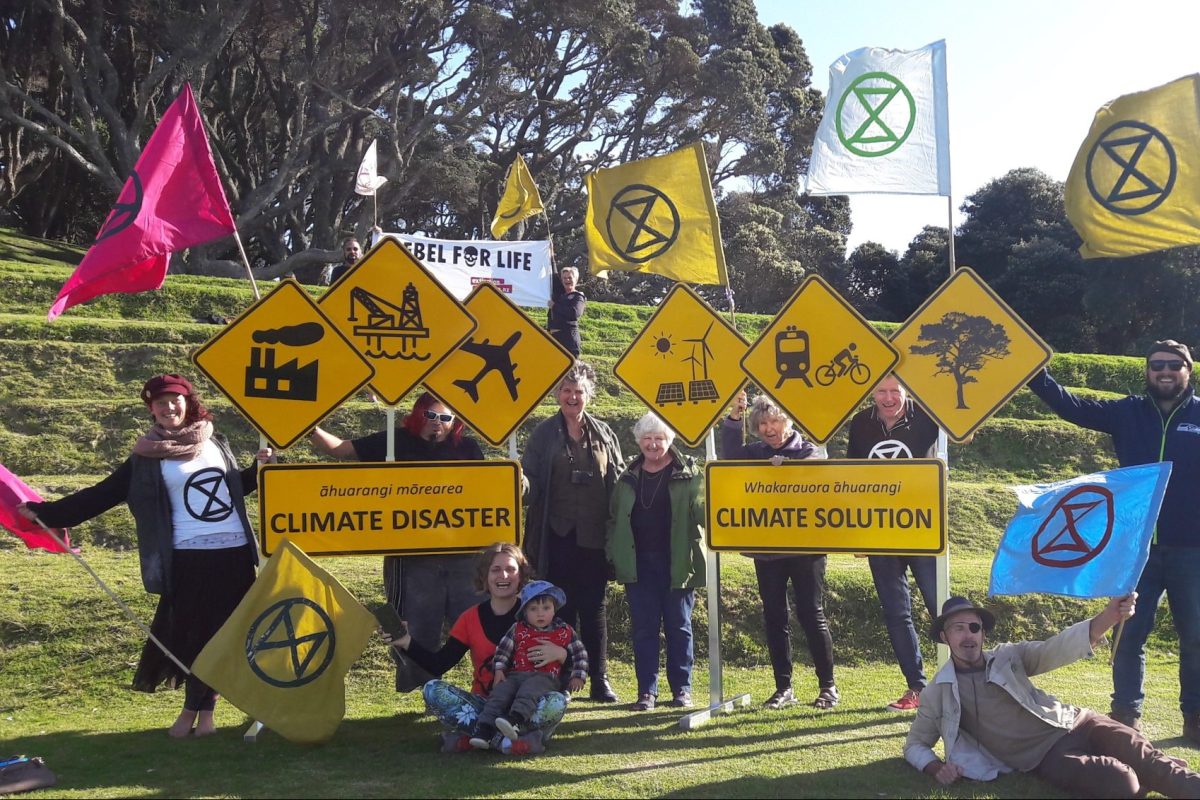Extinction Rebellion

- Written by
- Dyani Van Basten Batenburg
Rebels with a cause
You may have seen the signs dotted around the country, tucked alongside bridges, nestled next to lampposts and powerlines – wooden plaques emblazoned with the words “Extinction Rebellion” in red – and pondered what exactly are these signs referring to: animals, plants, people, waterways? The short answer is all of the above. Although bold in its quest to radically forefront a climate change revolution – zero emissions by 2025 – the New Zealand chapter of the global Extinction Rebellion movement is quietly unassuming in its drive to deliver real difference.
Rise up
Founded in 2018 in a small village in the Cotswold’s England, the non-violent activist group has spread its wings globally – Berlin, Montreal, Sydney, Mumbai – 70 countries in total, including New Zealand, to become one of the most pronounced environmental protest groups of the 21st Century. In a nutshell, Extinction Rebellion engage nonviolent civil disobedience to spur governments into action; to mitigate watershed moments in the climate system and prevent biodiversity loss, and social and ecological collapse.
“Bolstering a political will needs to go beyond stock standard lobbying,” says Caril Cowans, spokesperson for Extinction Rebellion Tāmaki Makaurau Auckland. “We have to disrupt big organisations if we are really going to achieve our target of reaching zero emissions by 2025.”
Create change not war
Disruption without violence, but disruption to highlight the big issues at play, says Caril.
“As an organisation we are tied to the science of the IPCC which informs the COP – Conference of the Parties – the UN’s annual climate change summit, which they have been running for the past three decades,” explains Caril. “We acknowledge the urgency of climate change – the need to act now.”
Going straight to the larger source of environmental impact is what Extinction Rebellion are focused on – this means targeting big businesses who use fossil fuels. Since their inception here in New Zealand in 2019, groups across the country have banded together to ‘disrupt’ operations from the top of the North to the bottom of the South. They’ve stopped coal trains in Otago, blocked shipments of super phosphate at Tauranga’s port, and shutdown BP’s Remuera headquarters.
“New Zealand has a really strong foothold in renewable energy but some of our big players are still powered by coal – Fonterra uses coal to manufacture its milk products – and although they’re ‘committing’ to be coal-free by 2050, it’s just not good enough, we need change now,” says Caril. “Not only do we need to make a switch to electric vehicles quicker, we need to get cars off the road – especially in Auckland where the largest pollutant is car emissions. We need the government and local councils to up the game, provide free public transport and incentivise people out of their cars.”
No hold ups
And although activism in a COVID-19 environment isn’t without its challenges, New Zealand’s Extinction Rebels persevere with reverence – with protests across country already planned well into next year.
“Our principles are hard and fast, and the evidence is strong – science tells us we must act now. Fires, floods, droughts, air pollution – our climate is operating at an all-time alert level – so we must acknowledge the truth, and continually disrupt the major players damaging our environment to keep our planet liveable.”
To learn more about New Zealand’s Extinction Rebellion movement, or to join a local group, reach out to them at www.extinctionrebellion.nz.